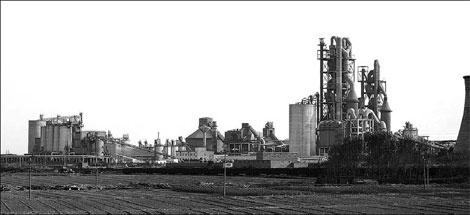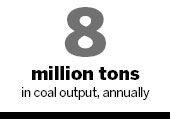|
|

Cement factory at an industrial zone in the south of Ruzhou, where the resources are putting the city on a fast growth track. Gui Yanwei / China Daily
|
This historic city in Henan province in central China is finding new ways to reinvent itself - as a good place to invest - thanks to its resources and industrial foundation .
Ruzhou sits in the center of the province's five major cities: the capital Zhengzhou; the popular historic, tourist destination Luoyang; coal-rich Pingdingshan; and the other historic cities of Xuchang and Nanyang.
It covers a 1,573-square-kilometer area and is a regional hub because of its network of railways, expressways and highways.
It is less than two hours by car from Zhengzhou, Luoyang and Nanyang airports, and five hours from the port of Rizhao, in the neighboring coastal province of Shandong.
It also has an abundance of 46 types of known minerals, 26 of which have been developed, including coal, bauxite and limestone for cement.
Ruzhou sits on an estimated 3.55 billion tons of coal, which has given it the nickname "50-km-long sea of coal". It is one of 50 key coal-mining cities in China, with an annual output of 8 million tons.
Hot springs

Another underground treasure is its hot springs, a geothermal resource with a temperature between 57 and 75 C, and which contains many elements beneficial to health.
The springs can compete with the more famous minerals springs in Vichy, France, in quality, so they are ideal healthcare spots.
This resource wealth helped the city's industrial development in the energy, chemicals, machine, food processing, metallurgy, and construction sectors.
Naturally, local companies in related businesses have grown and have gradually gained influence nationwide and even globally.
Ruzhou is now the world's third largest producer of L-tryptophan, which is used in a number of ways to treat attention deficit-hyperactivity disorder, insomnia, even depression.
The city tops in Asia in its alloys and wheels for heavy high-speed locomotives, and a major producer of cement.
Ruzhou is also a major national wheat, grain and meat center, and, a producer of cornstarch and biscuits.
Its sewage treatment plant can handle 40,000 tons of waste water daily and it has an eco-friendly garbage-treatment system.
Friendly environment
With its forest-coverage running to 28 percent, Ruzhou has improved its environment dramatically.
It has also improved its administration and investment policies to attract investors from China and abroad.
These include the US' KKR, a private equity member of the Fortune 500, and the International Finance Corp, a member of the World Bank Group.
The investment has helped the local economy and put Ruzhou in 154th place last year, in competitiveness, out of 2,001 county-level cities.
It has also taken a number of awards for its innovation, startups, tourism, private economy, and environment.
(China Daily 09/02/2011 page14)
|